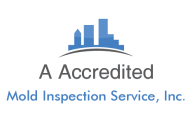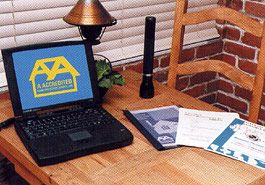How To Use This Mold Inspection Report Information
DISCLAIMER: It takes years of mold inspection experience to learn how to find and identify the signs of mold and moisture problems.
Do not use this information as an excuse to try and do your own full and final mold inspection. We are not implying that you should do your own mold inspection. If you suspect mold, review the information on this webpage, and on other sections of this website. Next, hire a certified and where applicable licensed mold inspector.
Below are comments that our mold inspector uses over and over again when writing mold inspection and testing reports. By reading these comments you will acquire knowledge of problems commonly encountered during mold inspections.
Typical Comments on a Mold Inspection Report May Be as Follows:
SEPRATING OF BASEBOARDS FROM WALL
Baseboards are wooden strips located at the bottom of the walls. Your baseboards were pulling away from your wall very slightly. Wooden baseboards often pull away from the bottom of walls because they expand when they absorb water. The wet expanded baseboard pushes away from the wall. As the water dries the baseboard shrinks leaving a tiny hairline crack between the baseboard and wall. Please note that the crack or separation is usually extremely narrow and can easily go unnoticed.
STAINED TACK STRIPS
Tack strips under the carpet help hold the carpet down. Your inspector observed stains, rust, or decay on your tack strips. Water damage at tack strips often indicates moisture leaks at the wall, window, or roof section above the water damaged section of tack strip.
STAINED BASEBOARDS
Observed moisture stains on baseboards. Water stains on baseboards often indicate moisture leaks at the wall, window, or roof section above the stained section of baseboard.
LINOLEUM FLOOR COVERINGS
When water leaks onto linoleum floor coverings, the water sometimes finds its way under the floor coverings. Water cannot readily evaporate. Water trapped under linoleum then mixes with the floor covering’ s glue backing. Wet glue creates a perfect moisture and food rich hiding place for mold to grow. This is a non-destructive investigation; thus, your inspector did not remove vinyl floor coverings from your floors.
WATER DAMAGED PAINT AND MOISTURE IN THE WALL
Your mold inspector discovered cracked, bubbling, wrinkled, or peeling paint. This is indicative of moisture intrusion in the above referenced location. This may have resulted in a hidden mold problem. Repair all active leaks in this and all areas.
EXTERIOR WALL DAMAGE
Extremely important! Have a qualified repair person seal the many openings on the exterior of the walls. Prior to any remediation, always correct all conditions that have contributed to excess moisture or humidity at the property. Extract any excess water from the property, and remove excess humidity with a professional dehumidifier. Maintained humidity between 30% and 50% in the work area. Your inspector is not responsible for mold that returns after remediation due to your failure to have any and all required humidity and moisture repairs completed.
HUMIDITY MOLD ON FURNATURE
Your inspector found mold growing on furniture throughout your property. This type of mold is often found widespread throughout the interior of a property because it is not associated with an isolated leak. This mold gets its moisture from moist humid air, thus, can grow anywhere that air travels in your property.
It typically consists of powdery round colonies of white or greenish white pen asp mold. Tiny golden tan pen asp mold spots, or even black Cladosporium mold is sometimes found as well.
MOLDY AC DUCTS
The inspector observed what appeared to be possible mold at visible sections of ducts. As a result, ducts with too much mold often have to be cleaned and encapsulated, or simply removed.
Mold growth in AC ducts require moisture and a food source. Moisture is often provided via humidity, and dust is the food source. Use a properly maintained, properly fitting filter in your AC return. A good filter will help cut down on the amount of dust going into the system. To properly control humidity in your ducts, operate your air conditioner in the automatic mode. Operation with the thermostat in the on position may move humid, unconditioned air through the ducts.
Always prevent excess humidity from being sucked into your AC. Humidity can be pulled in via openings in the air handler closet walls, ceiling, and floor. These holes are called entrainment holes.
MOLDY AC COILS
The bottom side of the evaporator coils on the interior of the air handler were moldy.
MOLDY BLOWER FAN
The blower fan on the interior of the air handler was moldy.
MOLDY AC HEATING COILS
After the heat was turned on, your mold inspector detected burning mold odor. This odor indicated some mold on the heating coils. As a result, cleaning the interior of the AC is likely worthwhile.
The type of mold on heating coils is likely Cladosporium mold.
Cladosporium mold is extremely common in all areas indoors and out, and they sometimes cause allergic reactions when growing to an elevated level.
Mold growth in AC units is more of a concern when you can smell mold even when the AC is not heating and burning the mold.
AC ENTRAINMENT HOLES
Your inspector found the following entrainment hole pathways that should be repaired:
WHAT IS ENTRAINMENT?
Entrainment is when your AC unit / air handler pulls contaminated air in. The bad air comes from an attic, crawl space, wall void, or outdoor area through an often small, entrainment hole. Often these holes are hidden in your AC closet.
These holes are found in the wall, ceiling, or floor of an AC closet. They can also be in a return duct. Next the air handler carries these contaminates via your duct work to habitable sections of your building. In humid climates this condition may result in excess humidity in your AC and ducts. This humidity provides moisture for mold growth in your AC and ducts.
FRESH AIR INTAKE IN COMMERCIAL BUILDING
1) The building is a commercial building, thus, has a fresh air intake for the introduction of fresh outdoor air. Intakes are typically beneficial for indoor air quality, however; large amounts of humidity are introduced when outdoor air is humid.
2) Also, because your thermostat is set to on, the AC is constantly pulling humid outdoor air in via the fresh air intake without drying it first as it would in the auto setting. Thus, the thermostat set to on, and the presence of a fresh air intake are working synergistically to cause humidity problems. It also caused condensation in your AC system that resulted in mold problems in your AC unit.
MOISTURE METER READINGS
ABOUT MOISTURE METERS
Moisture meters are handheld devices that pass tiny electrical charges or radio waves through surfaces to determine the moisture content in the surfaces being tested.
YOUR LEVELS
Moisture meter testing in the areas tested indicated elevated moisture levels at the time of inspection.
LEVELS IN GENERAL
Many typical moisture meters give an indication of elevated moisture if moisture levels are above 16% to 18% moisture in wood or drywall.
MOLD AT CEILING
Your mold inspector observed mold in the ceiling. Mold on the ceiling may indicate an active roof leak and additional hidden mold. Repair all active leaks in this and all areas.
LEAKY WINDOWS
The mold inspector observed evidence of moisture intrusion under windows in the form of elevated moisture or moisture damage under windows. Or the mold inspector observed evidence in the form of defective caulking on the exterior side of windows. Therefore, you should expect hidden mold in walls under these windows. Windows above eye level are not typically readily accessible, thus are not typically inspected.
ABOUT THE COMPANY PROVIDING THE ABOVE MOLD INSPECTION REPORT COMMENTS
Our company provides mold inspection services in Florida, and mold inspection software in all of the USA!
If you are looking for a mold inspector in Palm Beach County, or anywhere in South East Florida click here. If you are an inspector in need of mold report software follow this link.
Established In 2003 A Accredited Mold Inspection Service, Inc. Provides Professional Mold Inspector Services In The Following South East Florida Areas.
A Accredited Mold Inspection Service, Inc.
1(888) 381-6651

